Reza Ghoddoosian
Pose-Aware Weakly-Supervised Action Segmentation
Apr 08, 2025
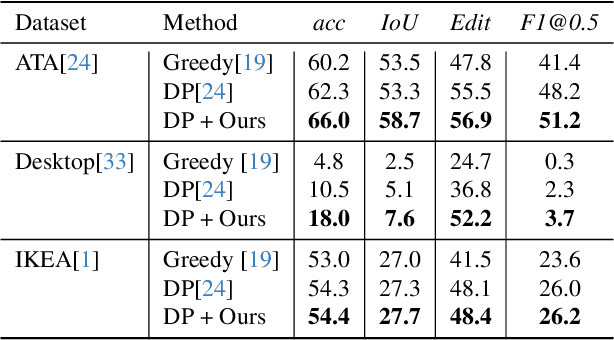
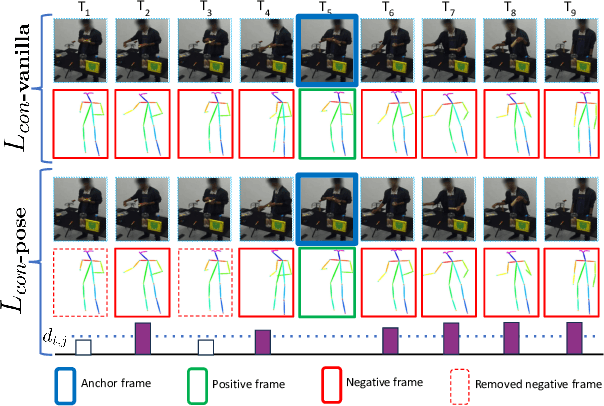
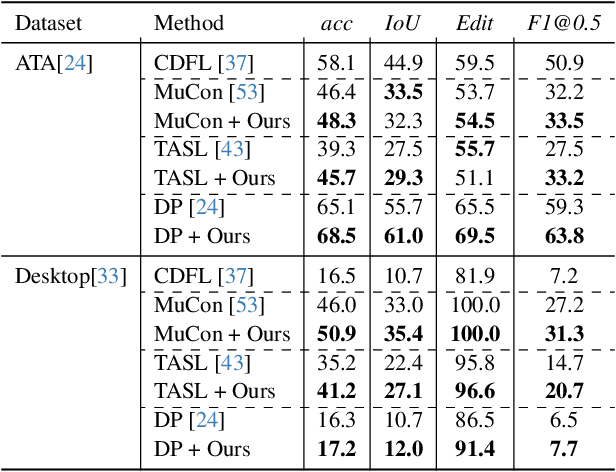
Abstract:Understanding human behavior is an important problem in the pursuit of visual intelligence. A challenge in this endeavor is the extensive and costly effort required to accurately label action segments. To address this issue, we consider learning methods that demand minimal supervision for segmentation of human actions in long instructional videos. Specifically, we introduce a weakly-supervised framework that uniquely incorporates pose knowledge during training while omitting its use during inference, thereby distilling pose knowledge pertinent to each action component. We propose a pose-inspired contrastive loss as a part of the whole weakly-supervised framework which is trained to distinguish action boundaries more effectively. Our approach, validated through extensive experiments on representative datasets, outperforms previous state-of-the-art (SOTA) in segmenting long instructional videos under both online and offline settings. Additionally, we demonstrate the framework's adaptability to various segmentation backbones and pose extractors across different datasets.
ACE: Action Concept Enhancement of Video-Language Models in Procedural Videos
Nov 23, 2024

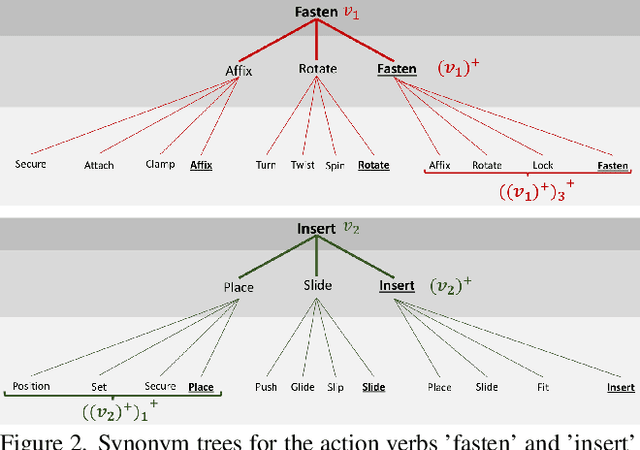
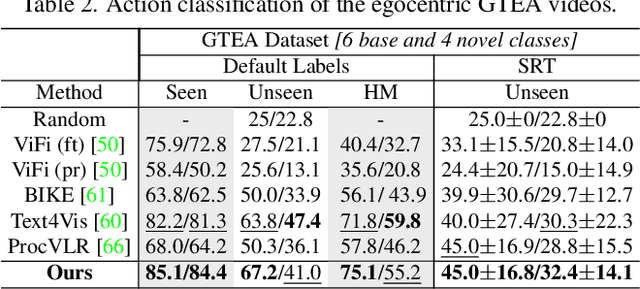
Abstract:Vision-language models (VLMs) are capable of recognizing unseen actions. However, existing VLMs lack intrinsic understanding of procedural action concepts. Hence, they overfit to fixed labels and are not invariant to unseen action synonyms. To address this, we propose a simple fine-tuning technique, Action Concept Enhancement (ACE), to improve the robustness and concept understanding of VLMs in procedural action classification. ACE continually incorporates augmented action synonyms and negatives in an auxiliary classification loss by stochastically replacing fixed labels during training. This creates new combinations of action labels over the course of fine-tuning and prevents overfitting to fixed action representations. We show the enhanced concept understanding of our VLM, by visualizing the alignment of encoded embeddings of unseen action synonyms in the embedding space. Our experiments on the ATA, IKEA and GTEA datasets demonstrate the efficacy of ACE in domains of cooking and assembly leading to significant improvements in zero-shot action classification while maintaining competitive performance on seen actions.
Weakly-Supervised Online Action Segmentation in Multi-View Instructional Videos
Mar 24, 2022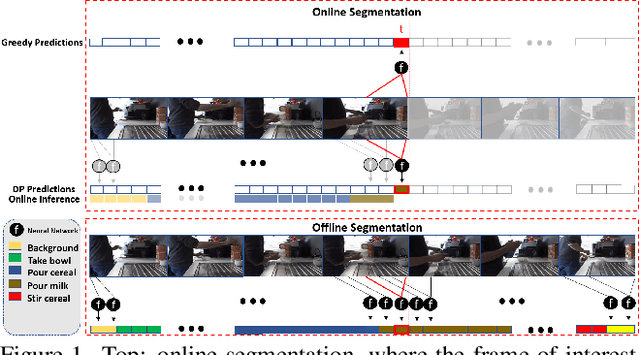

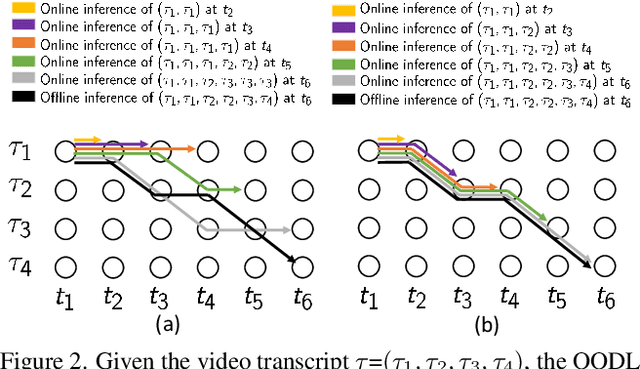
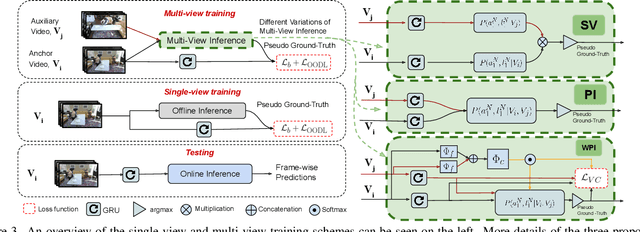
Abstract:This paper addresses a new problem of weakly-supervised online action segmentation in instructional videos. We present a framework to segment streaming videos online at test time using Dynamic Programming and show its advantages over greedy sliding window approach. We improve our framework by introducing the Online-Offline Discrepancy Loss (OODL) to encourage the segmentation results to have a higher temporal consistency. Furthermore, only during training, we exploit frame-wise correspondence between multiple views as supervision for training weakly-labeled instructional videos. In particular, we investigate three different multi-view inference techniques to generate more accurate frame-wise pseudo ground-truth with no additional annotation cost. We present results and ablation studies on two benchmark multi-view datasets, Breakfast and IKEA ASM. Experimental results show efficacy of the proposed methods both qualitatively and quantitatively in two domains of cooking and assembly.
Hierarchical Modeling for Task Recognition and Action Segmentation in Weakly-Labeled Instructional Videos
Oct 12, 2021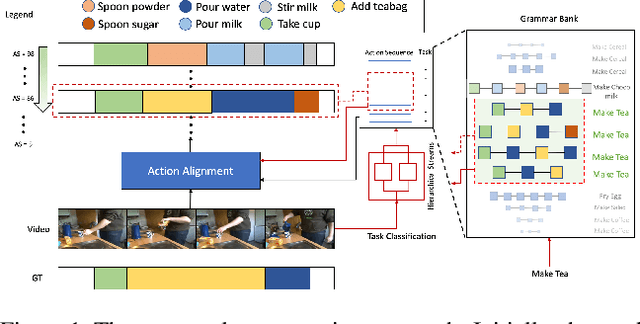
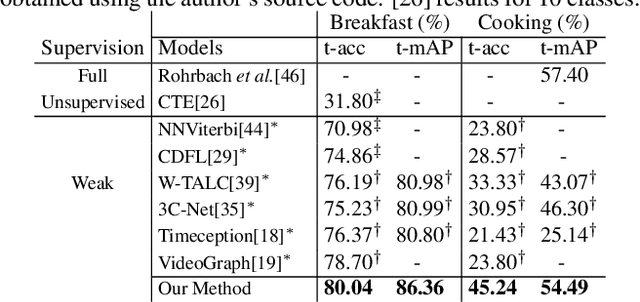
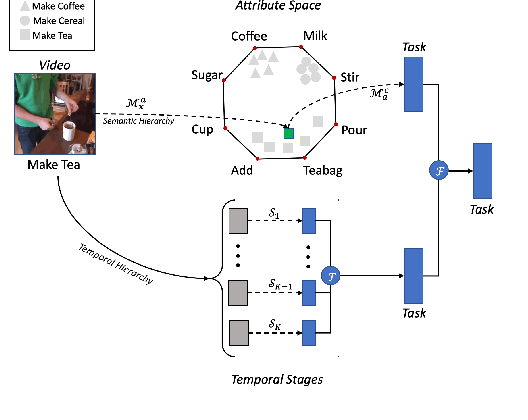
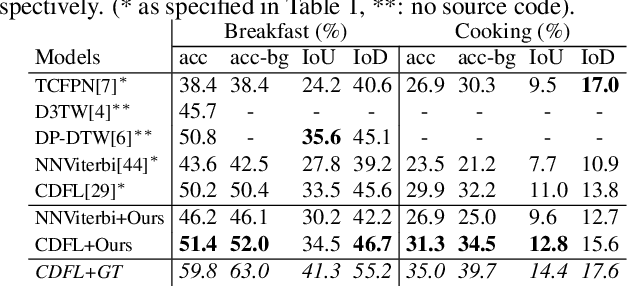
Abstract:This paper focuses on task recognition and action segmentation in weakly-labeled instructional videos, where only the ordered sequence of video-level actions is available during training. We propose a two-stream framework, which exploits semantic and temporal hierarchies to recognize top-level tasks in instructional videos. Further, we present a novel top-down weakly-supervised action segmentation approach, where the predicted task is used to constrain the inference of fine-grained action sequences. Experimental results on the popular Breakfast and Cooking 2 datasets show that our two-stream hierarchical task modeling significantly outperforms existing methods in top-level task recognition for all datasets and metrics. Additionally, using our task recognition framework in the proposed top-down action segmentation approach consistently improves the state of the art, while also reducing segmentation inference time by 80-90 percent.
Action Duration Prediction for Segment-Level Alignment of Weakly-Labeled Videos
Nov 20, 2020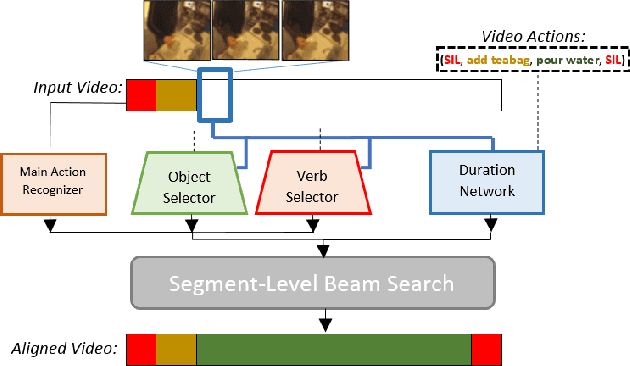
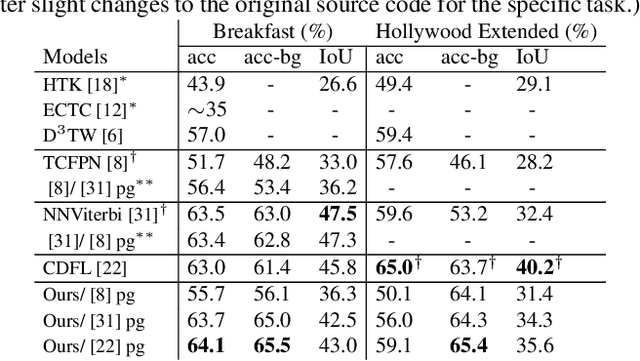

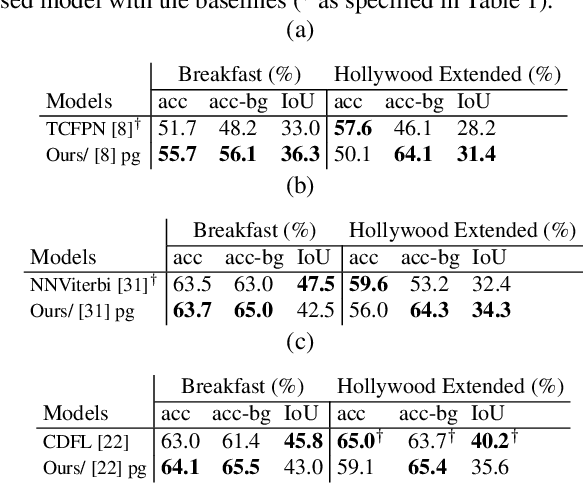
Abstract:This paper focuses on weakly-supervised action alignment, where only the ordered sequence of video-level actions is available for training. We propose a novel Duration Network, which captures a short temporal window of the video and learns to predict the remaining duration of a given action at any point in time with a level of granularity based on the type of that action. Further, we introduce a Segment-Level Beam Search to obtain the best alignment, that maximizes our posterior probability. Segment-Level Beam Search efficiently aligns actions by considering only a selected set of frames that have more confident predictions. The experimental results show that our alignments for long videos are more robust than existing models. Moreover, the proposed method achieves state of the art results in certain cases on the popular Breakfast and Hollywood Extended datasets.
A Realistic Dataset and Baseline Temporal Model for Early Drowsiness Detection
Apr 15, 2019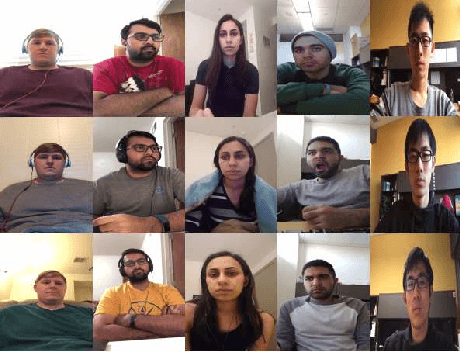
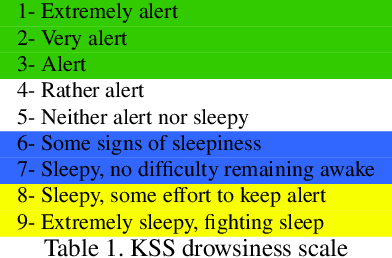

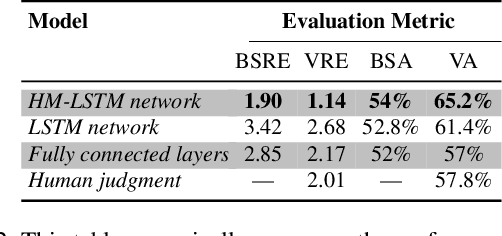
Abstract:Drowsiness can put lives of many drivers and workers in danger. It is important to design practical and easy-to-deploy real-world systems to detect the onset of drowsiness.In this paper, we address early drowsiness detection, which can provide early alerts and offer subjects ample time to react. We present a large and public real-life dataset of 60 subjects, with video segments labeled as alert, low vigilant, or drowsy. This dataset consists of around 30 hours of video, with contents ranging from subtle signs of drowsiness to more obvious ones. We also benchmark a temporal model for our dataset, which has low computational and storage demands. The core of our proposed method is a Hierarchical Multiscale Long Short-Term Memory (HM-LSTM) network, that is fed by detected blink features in sequence. Our experiments demonstrate the relationship between the sequential blink features and drowsiness. In the experimental results, our baseline method produces higher accuracy than human judgment.
 Add to Chrome
Add to Chrome Add to Firefox
Add to Firefox Add to Edge
Add to Edge